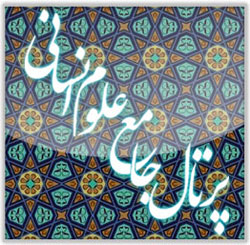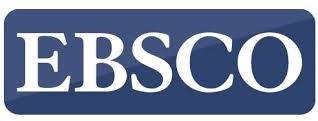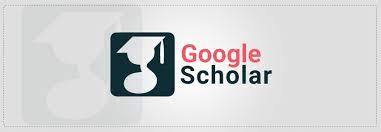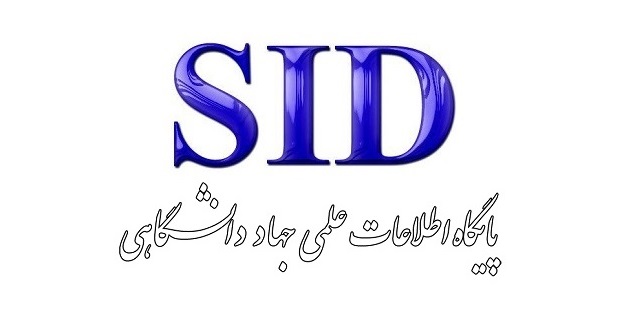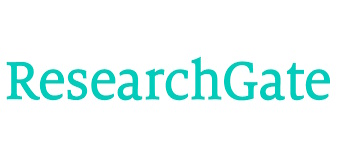Interpretive-Structural Modeling (ISM) of the Indirect Effects of Sports on the Economy of Metropolises in Iran
Keywords:
Sports, urban economy, metropolis, economic impactsAbstract
The purpose of this study was to explain the interpretive-structural model of the indirect effects of sports on the economy of metropolises in Iran. From a purpose perspective, this research is applied; regarding the type of data, it is qualitative; in terms of data analysis method, it is exploratory; in terms of time orientation, it is cross-sectional; and in terms of data collection method, it is field-based. The statistical population in this study included faculty members and individuals managing public sectors related to economic development, such as municipal managers, members of city councils, and directors of the General Department of Sports and Youth in several major provinces. Theoretical sampling was conducted purposefully until theoretical saturation was reached, which occurred after nine interviews. In the interpretive-structural modeling phase, a Delphi panel consisting of five experts in the field of sports economics was formed, and ultimately, the components were scored. In total, 47 open codes were categorized into six axial codes and one selective code representing the indirect effects of sports on metropolises. Interpretive-Structural Modeling (ISM) was performed using MICMAC software, and the results showed that the components of sports tourism and public health were the most influential, while employee productivity was the least influential component among others in affecting the economy of Iranian metropolises. Given the indirect effects of sports on the urban economy, it seems that officials should pay more attention to the development of sports in large cities.
Downloads
References
Barzegar Yazdi, Z., Majedi, N., & Naderi Nasab, M. (2023). A Model for Women's Consumption Pattern in the Field of Sports Goods. Strategic Studies on Youth and Sports, 22(61), 635-638. https://faslname.msy.gov.ir/article_705.html
Brown, K. M., Hoye, R., & Nicholson, M. (2014). Generating trust? Sport and community participation. Journal of Sociology, 50(4), 437-457. https://doi.org/10.1177/1440783312467091
Charron, N., & Rothstein, B. (2018). Regions of trust and distrust: How good institutions can foster social cohesion. In Bridging the Prosperity Gap in the EU (pp. 220-242). Edward Elgar Publishing. https://doi.org/10.4337/9781786436672.00017
Cubizolles, S. (2015). Sport and social cohesion in a provincial town in South Africa: The case of a tourism project for aid and social development through football. International Review for the Sociology of Sport, 50(1), 22-44. https://doi.org/10.1177/1012690212469190
Esmaeili, D. (2024). The role of economic environmental factors in crime commission and criminal responsibility. Quarterly Journal of Economic Jurisprudence Studies, 6(2), 209-224. https://doi.org/10.22034/ejs.2024.459701.1813
Gövdeli, T. (2019). Health expenditure, economic growth, and CO2 emissions: evidence from the OECD countries. Adıyaman Üniversitesi Sosyal Bilimler Enstitüsü Dergisi(31), 488-516. https://doi.org/10.14520/adyusbd.477571
Habibi Vatan, M., Nourbakhsh, M., Nourbakhsh, P., & Navabi Nejad, S. (2018). The impact of physical activity on productivity, reduction of illness-related absenteeism, and job commitment of female employees at Islamic Azad University. Journal of Sports Management, 10(3), 581-594. https://doi.org/10.22059/jsm.2017.229222.1799
Han, Z., Sun, I. Y., & Hu, R. (2017). Social trust, neighborhood cohesion, and public trust in the police in China. Policing: An International Journal of Police Strategies & Management, 40(2), 380-394. https://doi.org/10.1108/PIJPSM-06-2016-0096
Hatami, M., & Rouhani, A. (2023). The role of leisure activities based on physical activity in the productivity of teachers in Shiraz. New Ideas in Physical Education, 1(1), 18-28. https://doi.org/10.22034/ntes.2024.394790.1001
Huda, H. (2012). Investors' opinions about sports marketing in Bahrain. The Sport Journal. https://thesportjournal.org/article/investors-opinions-about-sports-marketing-in-bahrain/
Javid, F., Ghafouri, F., Javid, M., & Goudarzi, S. (2020). Sports tourism and sustainable development of host cities (Case study: Sarin Winter Sports Festival). Strategic Studies in Sports and Youth, 19(48), 197-217. https://doi.org/10.22059/jsm.2013.32171
Javid, M., Naghipour, B., & Almasi, H. (2015). Sports tourism and its economic impacts on host communities. Sports Management Studies, 7(32), 13-32. https://sid.ir/paper/514159/fa
Keehan, S. P., Cuckler, G. A., Sisko, A. M., Madison, A. J., Smith, S. D., Lizonitz, J. M., & Wolfe, C. J. (2012). National health expenditure projections: modest annual growth until coverage expands and economic growth accelerates. Health Affairs, 31(7), 1600-1612. https://doi.org/10.1377/hlthaff.2012.0404
Kończak, J. (2021). Sports themes in advertising. Journal of Physical Education and Sport, 21, 1179-1184. https://efsupit.ro/images/stories/aprilie2021/Art%20149.pdf
Kordlou, H., Elahi, A., & Khodayari, A. (2015). Standardization of the measurement tool for the credibility of advertisements through sports. Research in Sports Management and Movement Behavior, 25, 61-72. https://jrsm.khu.ac.ir/article-1-2295-fa.html
Masanovic, B. (2018). Attitudes of Consumers from Autonomous Province of Vojvodina toward Advertising through Sport in relation with the Frequency of Watching Sports Events. Sport Mont, 16(3). http://www.sportmont.ucg.ac.me/?sekcija=article&artid=1432
Molnar, S., Lilić, L., Popović, S., Akpinar, S., & Jakšić, D. (2011). Attitudes of various demographic groups toward advertising through sport at METU. Facta Universitatis: Series Physical Education & Sport, 9(3). https://www.researchgate.net/publication/237071811
Moradi Chalashtari, J., Moradi, M. R., Noorouzian Qahfarakhi, S., & Jafari, A. (2013). Examining economic barriers affecting the attraction of foreign investment in the football industry of the Islamic Republic of Iran. Journal of Sports Management, 5(2), 129-147. https://doi.org/10.22059/jsm.2013.32171
Naghi, M., & Khadem Amir, R. (2021). Examining the role of sports event tourism in the economic development of the Turkmen Sahra region in Golestan Province (Case study: Equestrian competitions). New Approaches in Sports Management, 9(35), 83-102. https://ntsmj.issma.ir/article-1-1705-fa.html
Nasiri, M., & Dastoom, S. (2020). Designing a model for analyzing the ecosystem of citizen sports and planning its development (Case study: Bandar Anzali city). Management and Sports Development, 9(2), 155-173. https://doi.org/10.22059/sd.2020.391522
Pereira, M. J., Coombes, B. K., Comans, T. A., & Johnston, V. (2015). The impact of onsite workplace health-enhancing physical activity interventions on worker productivity: a systematic review. Occupational and Environmental Medicine, 72(6), 401-412. https://doi.org/10.1136/oemed-2014-102678
Perez-Perez, M., Serrano Bedia, A. M., Concepcion Lopez-Fernandez, M., & García-Piqueres, G. (2018). Research opportunities on manufacturing flexibility domain: A review and theory-based research agenda. Journal of Manufacturing Systems, 48(1), 9-20. https://doi.org/10.1016/j.jmsy.2018.05.009
Razavian, S., Majidi, N., & Mohammadiat, F. (2020). Analyzing the effect of virtual communication networks on the attitudes and sports participation of Tehran citizens. Strategic Studies in Sports and Youth, 19(47), 223-246. https://faslname.msy.gov.ir/article_367.html
Spruit, A., Van Vugt, E., Van Der Put, C., Van Der Stouwe, T., & Stams, G. J. (2016). Sports participation and juvenile delinquency: A meta-analytic review. Journal of youth and adolescence, 45, 655-671. https://doi.org/10.1007/s10964-015-0389-7
Taylor, I. (2020). The political economy of crime. In Crime, Inequality and the State (pp. 353-365). https://doi.org/10.4324/9781003060581-27
Wikner, J., & Backstrand, J. (2018). Triadic perspective on customization and supplier interaction in customer-driven manufacturing. Production & Manufacturing Research, 6(1), 3-25. https://doi.org/10.1080/21693277.2017.1415825
Zeytunlu, A., Farahani, A., & Asadi, H. (2013). Sports tourism and its long-term economic effects: A study of the perspectives of tourism and physical education experts and tourists regarding the impacts of sports tourism development on employment and income in Golestan Province. New Approaches in Sports Management, 1(1), 9-18. http://ntsmj.issma.ir/article-1-64-fa.html
Downloads
Published
Submitted
Revised
Accepted
Issue
Section
License
Copyright (c) 2025 Reza Alizadeh (Author); Shahriar Kharazian; Hakimeh Hatef, Ali Hoseinzadeh Gonabadi (Author)

This work is licensed under a Creative Commons Attribution-NonCommercial 4.0 International License.


